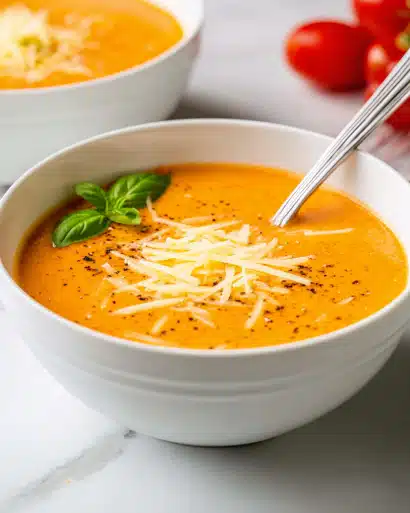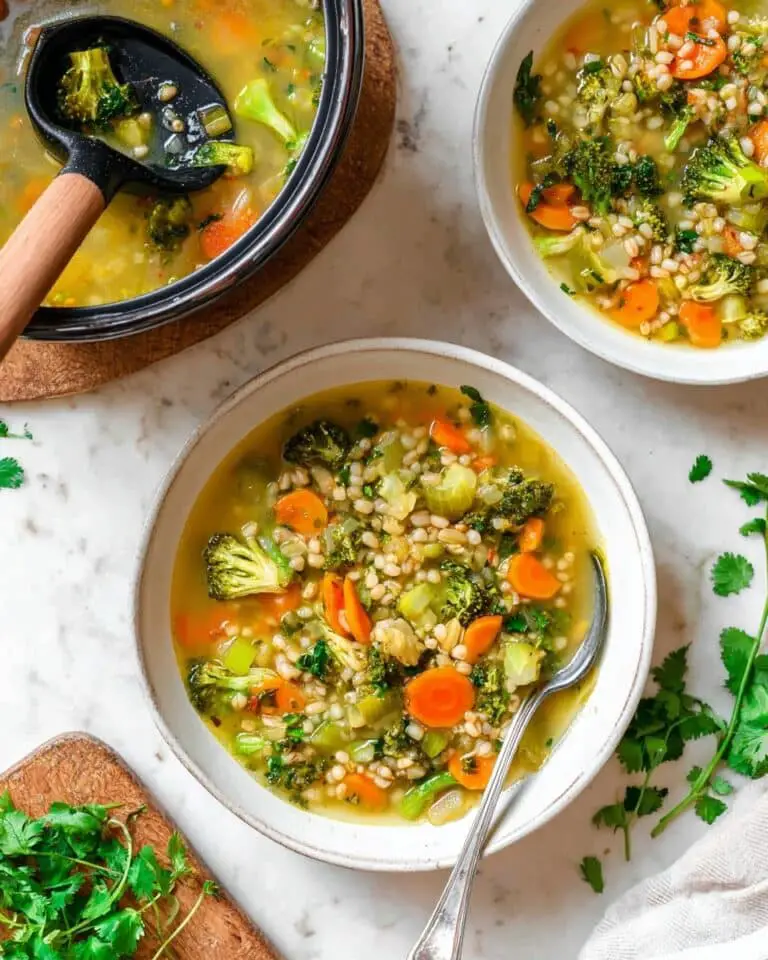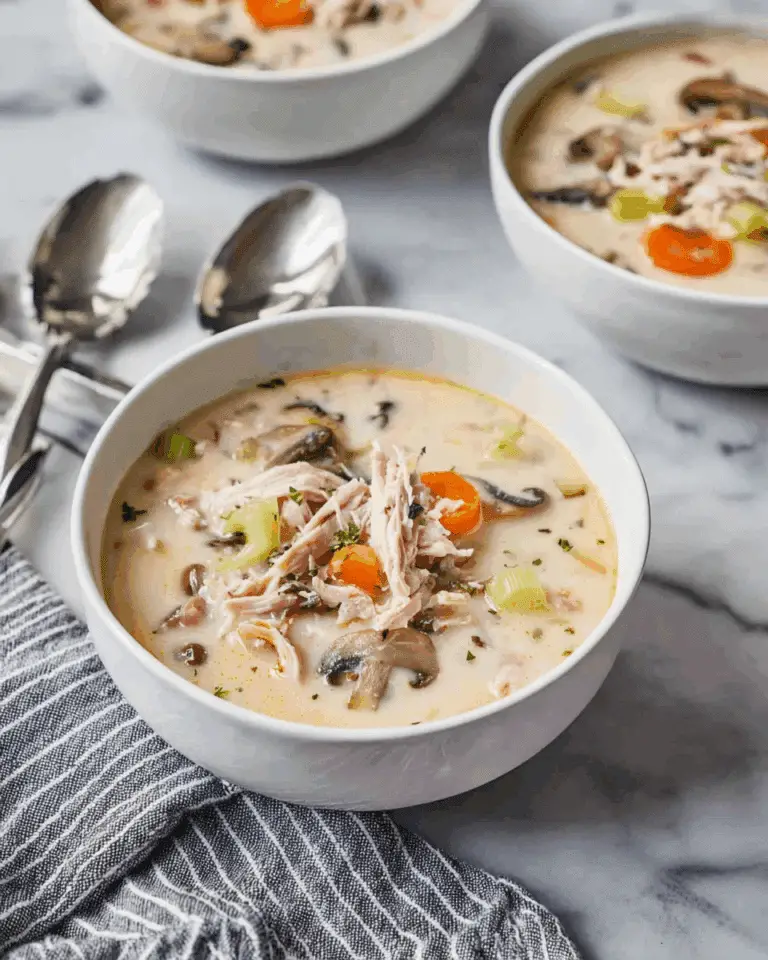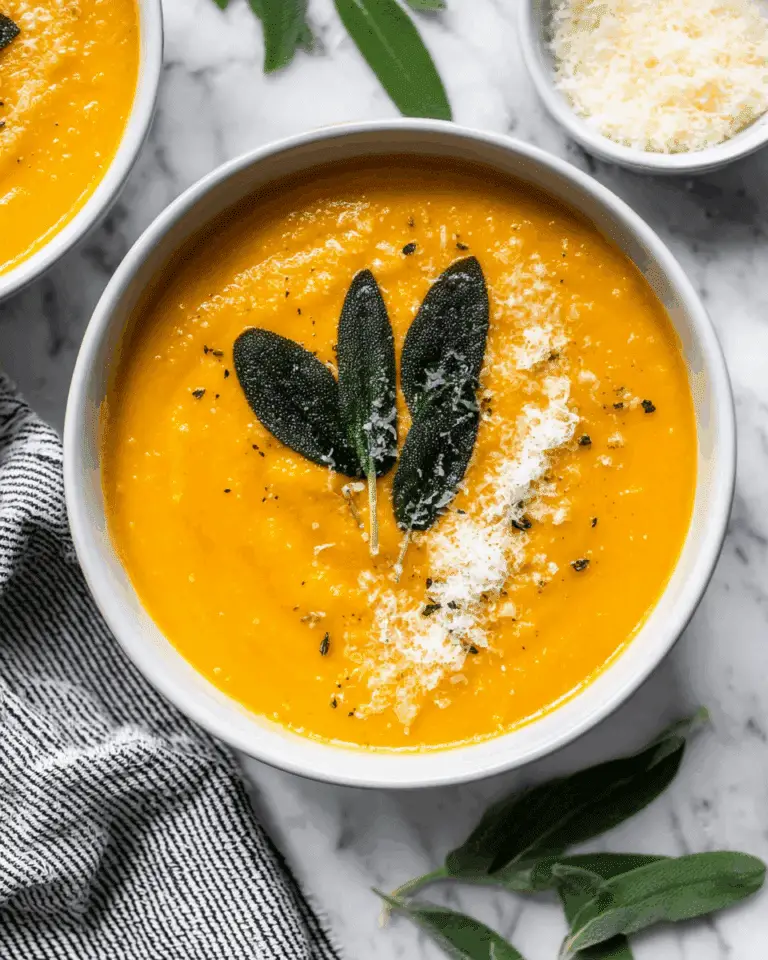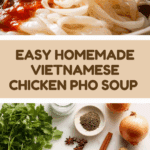If you are craving something that warms you from the inside out, then this Vietnamese Chicken Pho Soup (Pho Ga) Recipe might just become your new go-to comfort food. Pho Ga is the beloved chicken version of the famous Vietnamese beef pho, boasting a rich, aromatic broth infused with charred ginger, onions, and a symphony of spices. It’s a bowl full of simple yet vibrant flavors, tender shredded chicken, and silky rice noodles, all coming together to create an unforgettable Vietnamese classic that’s surprisingly easy to make at home. Whether it’s a chilly evening or any day you want a satisfying meal, this soup offers a wonderful taste of Vietnam served right from your kitchen.
Ingredients You’ll Need

This recipe relies on straightforward, fresh ingredients that each play a key part in building the depth, texture, and brightness of the dish. From the charred aromatics that set the savory tone to the delicate rice noodles that provide the perfect slurp, every element matters.
- 1 tbsp oil (vegetable or canola): For perfectly charring the onions and ginger to release deep, smoky flavors.
- 2 onions, halved (skin on): Adds natural sweetness and body to the broth once charred.
- 5cm/ 2″ ginger, sliced unpeeled: Offers a radiant warmth and subtle spice that defines Pho Ga.
- 2 litres water: The foundation of your broth, pure and simple.
- 1.5 kg chicken thighs, bone in skin on: Juicy, flavorful meat that’s perfect for shredding into the soup.
- Small bunch coriander/cilantro: For an herbal lift both in the broth and as garnish.
- 5 star anise pods: Imparts a sweet, licorice note that’s signature in pho broth.
- 1 cinnamon stick: Adds warmth and complexity, enriching the soup’s aroma.
- 4 cloves: Small but mighty aromatic spices that round out the flavor profile.
- 2 tsp fennel seeds: Lends a subtle sweetness and hints of anise.
- 2 tsp coriander seeds: Adds a citrusy, earthy balance to the spice mix.
- 8 tsp fish sauce: A key umami booster that brings authentic saltiness and depth.
- 6 tsp white sugar: Balances savory and aromatic elements perfectly.
- 3/4 tsp salt: Essential for seasoning your broth just right without overpowering.
- 360g dried rice noodles (or 600g fresh): Silky noodles that soak up the broth beautifully.
- 2 green onion stems, finely sliced: Adds a fresh crunch and mild onion flavor at the end.
- 3 cups bean sprouts: Crisp, refreshing texture for topping.
- Small bunches of Thai basil, mint, coriander/cilantro: Classic herb trio that brightens each bite.
- 2 limes, cut into wedges: For a zesty splash of acidity just before eating.
- Hoisin sauce: Offers a sweet, tangy option to customize each bowl.
- Sriracha: Adds heat and vibrancy if you like a little kick.
- Red chillies, finely sliced (optional): For extra spice and color.
How to Make Vietnamese Chicken Pho Soup (Pho Ga) Recipe
Step 1: Char the Aromatics
Start by heating the oil in a large pot over high heat. Lay the halved onions and ginger slices cut side down and don’t touch them for a couple of minutes. This charring step creates those deeply smoky, complex flavors that make the broth truly special. After about two minutes, turn them over to blacken the other side as well. This simple trick takes your Pho Ga from ordinary to extraordinary.
Step 2: Build the Broth
Add water to the pot along with the chicken thighs, coriander bunch, star anise, cinnamon stick, cloves, fennel seeds, coriander seeds, fish sauce, and white sugar. Bring everything to a simmer, then reduce the heat to maintain a very gentle simmer with the lid on ajar. The low and slow simmering allows the chicken to cook tenderly and the spices to infuse the broth with that iconic layered flavor.
Step 3: Simmer and Skim
Let your broth gently simmer for about 1.5 hours. You’ll want to keep an eye out for any foam or impurities that rise to the surface; skim these off with a spoon once or twice during cooking. This step ensures your broth stays crystal clear and clean-tasting, which is a hallmark of great pho.
Step 4: Strain and Adjust
Once the broth is done, remove the chicken thighs and set them aside to cool. Strain the broth through a fine sieve into a clean pot, aiming for about 1.5 liters of liquid. If you have more, simmer it down until you reach the right volume; if less, add a bit of water. Add salt to taste and let the broth return to a gentle simmer. The seasoning should be slightly salty since the noodles and toppings will mellow it out.
Step 5: Prepare the Chicken and Noodles
Shred the cooled chicken meat off the bones, discarding skin and bones. Prepare the rice noodles according to the package instructions just before serving, draining them thoroughly to prevent the broth from being watered down. You want your noodles tender but not soggy, ready to soak up that fragrant broth.
Step 6: Assemble Your Pho Ga Bowls
Distribute the noodles evenly into serving bowls, then top with generous piles of shredded chicken. Ladle hot broth over each bowl, sprinkle sliced green onions on top, and offer a spread of garnishes and herbs on the side. Don’t forget a wedge of lime to squeeze for that fresh, tangy pop that wakes up all the senses.
How to Serve Vietnamese Chicken Pho Soup (Pho Ga) Recipe
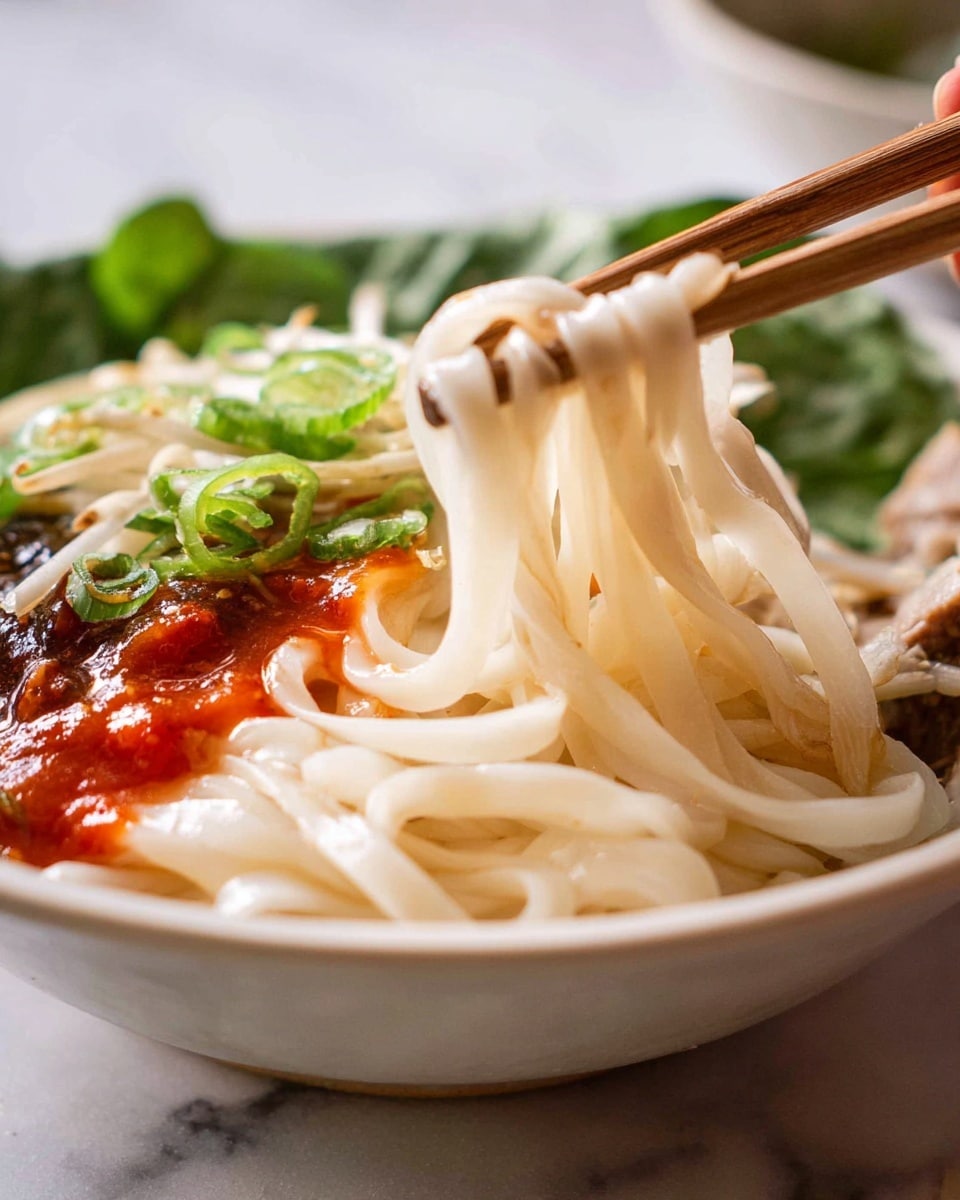
Garnishes
The magic of a Pho Ga bowl truly shines in its garnishes. Fresh bean sprouts add a satisfying crunch, while Thai basil, mint, and cilantro introduce aromatic brightness that cuts through the rich broth. A squeeze of lime juice lifts the flavors to new heights, and hoisin sauce or sriracha lets each person customize their bowl to their heart’s content. Red chillies are a brilliant optional touch if you like a little heat.
Side Dishes
Pho Ga stands beautifully on its own but pairs wonderfully with some light Vietnamese sides. Think fresh spring rolls with a peanut dipping sauce or crisp cucumber salad for a cooling contrast. If you want to keep things simple, a plate of pickled vegetables can add just the right acidic bite alongside your noodle bowl.
Creative Ways to Present
Turn your Pho Ga experience into a fun gathering by setting up a pho bar. Lay out bowls of herbs, garnishes, sauces, and noodles, and let guests build their own bowls. For a weeknight twist, serve pho in smaller glasses or bowls as appetizers or a light snack. Adding unusual herbs like shredded lemongrass or a splash of chili oil can put your own unique spin on this timeless recipe.
Make Ahead and Storage
Storing Leftovers
Leftover Vietnamese Chicken Pho Soup (Pho Ga) Recipe keeps beautifully in the refrigerator for up to three days. Store broth separately from the noodles to prevent them from becoming mushy. Keep shredded chicken in an airtight container and combine just before reheating and serving.
Freezing
You can freeze the broth and cooked chicken in separate freezer-safe containers for up to three months. Noodles don’t freeze well, so it’s best to prepare fresh noodles when you’re ready to enjoy the soup again. Label your containers clearly so you can enjoy a quick bowl of Pho Ga anytime.
Reheating
Gently reheat the broth on the stove until steaming but avoid boiling to keep the flavors bright. Add the shredded chicken to warm through. Prepare fresh noodles and assemble your bowl just like when you first made it for that truly authentic experience.
FAQs
Can I use chicken breast instead of thighs in the Vietnamese Chicken Pho Soup (Pho Ga) Recipe?
You certainly can, but chicken thighs are preferred for their richer flavor and juicier texture which hold up better during the long simmering process. If using breast, add it later in the cooking to avoid drying out.
What kind of rice noodles should I use for Pho Ga?
Thin, flat rice noodles are classic for pho. Dried ones work well if soaked properly, but fresh rice noodles available at Asian markets provide the best texture. Just be sure to follow package instructions carefully.
How do I get a clear broth in Pho Ga?
To achieve a clear broth, simmer very gently and skim off impurities that float to the surface during cooking. Avoid boiling vigorously and strain the broth well before serving.
Can I make Pho Ga vegetarian or vegan?
While the traditional recipe relies on chicken and fish sauce, you can create a vegetarian version by substituting vegetable broth, tofu, and using soy sauce in place of fish sauce. Add plenty of charred aromatics and spices to keep the complexity.
Is the broth spicy?
No, the broth itself is not spicy but is full of warm, aromatic spices like star anise and cinnamon. You can control the heat by adding sliced chillies or sriracha at the table based on your preference.
Final Thoughts
There’s truly nothing like a steaming bowl of Vietnamese Chicken Pho Soup (Pho Ga) Recipe to bring comfort and joy to your kitchen table. It’s a beautiful balance of simple ingredients, rich broth, and fresh herbs that come together in a way that feels both wholesome and indulgent. I encourage you to dive in and enjoy making this delightful dish at home — it’s much easier than you think, and the flavors are guaranteed to impress yourself and anyone lucky enough to share a bowl!
Print
Vietnamese Chicken Pho Soup (Pho Ga) Recipe
- Prep Time: 10 minutes
- Cook Time: 1 hour 30 minutes
- Total Time: 1 hour 40 minutes
- Yield: 4 – 6 servings
- Category: Mains, Soup
- Method: Stovetop
- Cuisine: Vietnamese
Description
Vietnamese Chicken Pho (Pho Ga) is a flavorful and aromatic chicken noodle soup, considered the lighter, easier-to-make sibling of traditional beef pho. Made from scratch with charred onions, ginger, fragrant spices, and tender chicken thighs simmered slowly to perfection, this comforting soup offers a delicious homemade alternative to takeout. Served with rice noodles and fresh herbs, it’s a perfect bowl for any day.
Ingredients
Charred Aromatics
- 1 tbsp vegetable or canola oil
- 2 onions, halved (skin on)
- 5 cm (2″) piece of ginger, sliced 0.75 cm thick (unpeeled)
Pho Soup Broth
- 2 litres (2 quarts) water
- 1.5 kg (3 lb) chicken thighs, bone in, skin on
- 1 small bunch coriander/cilantro
- 5 star anise pods
- 1 cinnamon stick
- 4 cloves
- 2 tsp fennel seeds
- 2 tsp coriander seeds
- 8 tsp fish sauce
- 6 tsp white sugar
- 3/4 tsp salt (cooking/kosher salt, or 1/2 tsp table salt)
Noodle Bowls
- 360g (13 oz) dried thin flat rice noodles (or 600g fresh)
- 2 green onion stems, finely sliced
Toppings (to serve as desired)
- 3 cups bean sprouts
- 1 small bunch each of Thai basil, mint, coriander/cilantro
- 2 limes, cut into 4 wedges
- Hoisin sauce
- Sriracha
- Red chillies, finely sliced (optional)
Instructions
- Char onion & ginger: Heat oil in a large 6 litre/6 quart pot over high heat. Place ginger and onion halves facedown and leave undisturbed for 2 minutes until they begin to blacken. Turn and cook another 2 minutes to develop a deep char and smoky flavor.
- Make the broth: Add 2 litres of water, chicken thighs, coriander bunch, star anise, cinnamon, cloves, fennel seeds, coriander seeds, fish sauce, and sugar to the pot with the charred aromatics. Bring to a simmer, then reduce heat to maintain a very gentle simmer with the lid slightly ajar. Simmer gently for 1.5 hours, occasionally skimming off any foam or scum to keep broth clear and flavorful.
- Strain and adjust broth: Remove the chicken thighs and strain the broth through a fine sieve into a clean pot. Measure the broth—aim for 1.5 litres/quarts. If more broth is present, simmer uncovered to reduce slightly; if less, add water to reach 1.5 litres. Stir in salt, then heat broth gently to a simmer and keep warm until serving.
- Prepare chicken: Shred the cooked chicken meat, discarding bones and skin. Optionally, reheat the shredded chicken briefly by dunking it in the hot broth just before serving.
- Prepare noodles: Cook dried rice noodles according to the package directions just before serving. Drain thoroughly to avoid diluting the broth.
- Assemble bowls: Divide noodles among serving bowls, top with shredded chicken, and ladle over about 375 ml (1.5 cups) of hot broth per bowl. Sprinkle with finely sliced green onions. Serve with bean sprouts, fresh herbs, lime wedges, hoisin sauce, sriracha, and optional sliced chillies for guests to customize their pho.
- Enjoy immediately: Pho is best enjoyed fresh while the broth is hot and aromatic, allowing the vibrant flavors and textures to shine.
Notes
- Using bone-in, skin-on chicken thighs imparts richer flavor to the broth; remove skin and bones before serving.
- Coriander (cilantro) is used both in the broth and as a fresh garnish for balanced flavor.
- Bean sprouts add crunch and freshness; rinse thoroughly before serving.
- Fresh herbs like Thai basil, mint, and coriander enhance traditional pho flavor.
- A 6 litre/6 quart pot is ideal for making the broth to allow ample room for simmering.
- Simmering the broth gently prevents cloudiness and preserves delicate aromas.
- Leftover shredded chicken can be refrigerated and used in salads, sandwiches, or fried rice.

